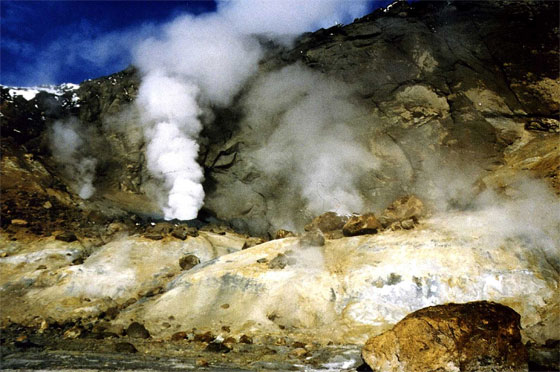Archaea - a brief introduction

Since their discovery as a third domain of life by Carl Woese and colleagues (Woese and Fox 1977, PNAS 74, 5088-90) beside Bacteria and Eukarya Archaea have not only served to study adaptation processes to extreme growth conditions. Being an important third and comparative lineage, they were also instrumental in studying the evolution and characteristics of central cellular functions. Initially it was assumed that Archaea are adapted to extreme habitats characterized by high temperature (e.g. thermophiles, hyperthermophiles), extreme pH-values (acidophiles), high salinity (halophiles) or that they harbor specific metabolic capacities, like methane formation (methanogens). However, more recent studies using molecular probes (DeLong 1998, Curr. Opin. Genet. Dev. 8, 207-10) indicated that Archaea are abundant in all ecosystems from soil to ocean and thus play an important role in the biogeochemical cycle.
The archaeal mosaic character. The study of Archaea has revealed several unique metabolic features, many of which differ from the bacterial or eukaryal counterparts. Especially in the central carbohydrate metabolism, Archaea feature a great metabolic diversity with many unusual “new” enzymes [21]. Strikingly, factors involved in cellular information processing (transcription, translation, replication, DNA repair) are highly homologous to the eukaryal equivalents. The archaeal system therefore represents an alternative and often simpler model to study the more complex processes that occur in the eukaryal nucleus.

Hot springs “solfataras” Kverkjökull (summit of the glacier), Iceland, 1992 (Photo by B. Siebers).
Hyperthermophiles, organisms with optimal growth above 80°C, have gained the special interest of many scientists due to their fascinating extreme lifestyle as well as due to specific experimental advantages of hyperthermophilic proteins (e.g. higher rigidity, ease of crystallization, simple purification procedures after recombinant expression in mesophilic hosts). This interest is further fueled by the great potential of hyperthermophilic proteins in biotechnological/industrial applications. With reference to applied aspects, a useful feature of “extremozymes” is that these enzymes are tolerant to acid and/or high temperature.
